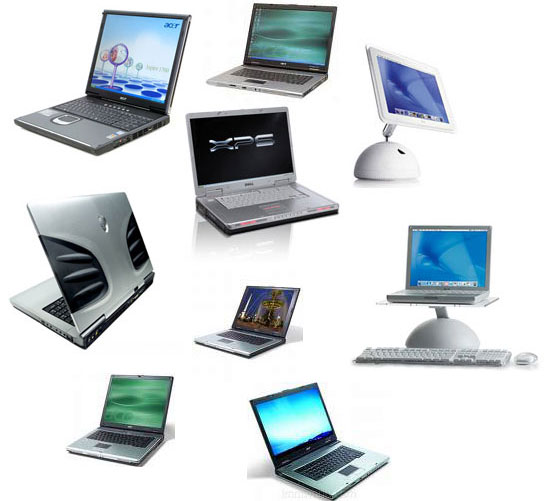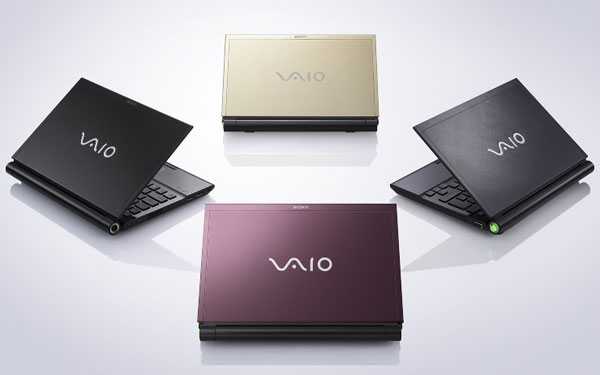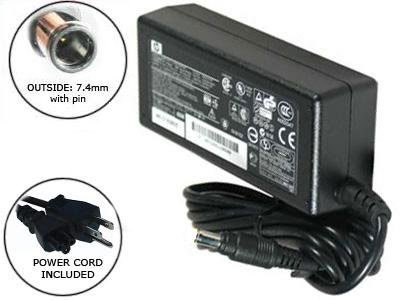Do you know how to choose a laptop to buy?
Choosing a laptop is a big challenge for consumers today. Here is what you need to find out before deciding to buy the product.

Laptop covers also show class
Plastic is still the most common material of laptop covers. This material helps reduce costs for products. Manufacturers are trying to create the art of plastic shells, such as the sinking lines that can be felt when sliding fingers on the case.
But anyway, plastic makes people think of cheap laptops. As a result, metal laptops are considered to be more advanced, and are popular in aluminum, as in 13-inch Apple MacBook Pro laptops (Core 2 Duo 2.4GHz), Asus U45Jc-A1, and HP Pavilion dm4- 1160us. These laptops have a more luxurious look and can be thinner than a plastic laptop. In fact, HP has moved its entire laptop line to metal this year, Toshiba and Acer have also released many laptops using alloy casing. Business laptop series often apply this design. Carbon fiber is another attractive material for laptops, but it is less used than aluminum and magnesium, and more expensive.

The bigger the screen, the heavier the machine
Weight and screen size are directly related to each other.
If you want to have a laptop that can be used as a desktop replacement and can be moved when you need it, you should choose a 14-inch screen. Of course there are some other exceptions. For example, Apple's MacBook Pro 15-inch (Core i5) and Samsung R540-11 are two of the lightest 15-inch laptops - lighter than many 14-inch laptops on the market.
Overall, choosing 13 and 14 inch laptops will still be satisfied with its features, without sacrificing mobility. The Toshiba Portege R705-P35 and Sony VAIO VPC-Z1390X are examples of great 13-inch laptops. 14-inch models like the HP Pavilion dm4-1160us, Dell Inspiron 14R, and Gateway ID49C13u also offer many features, but not so much that you have to buck your shoulders when carrying them. Below this level, you will get lost in the domain of netbooks - a completely different category from laptops.
Laptop models in the 16-18 inch range are usually suitable for media centers, game rooms and desktop replacements, such as Acer Aspire AS8943G-6782 (18 inches) and Dell XPS 15. These machines have powerful features like high resolution, ' extreme ' game graphics and countless other passionate, professional details.
What do you find in a laptop?
Many USB ports (at least 3-4) are a laptop standard. USB 3.0, provides faster data transfer speeds and greater connection bandwidth than USB 2.0 ports. Sony VAIO VPC-F136FM / B and Samsung RF701-S02US are USB 3.0-equipped models.
If you buy a laptop with one of the USB ports that can work as an eSATA port, you will be able to expand storage capacity when the internal hard drive is not enough space. Usually you won't use ports like eSATA because most laptops today have at least 320GB hard drives (the average netbook is 250GB). Upgrading to 500GB is also not very expensive, but just do it if you save a lot of videos or have a passion for creating video content. Normally, most people don't need such a big hard drive.
Although VGA is still the most popular way to show Powerpoint slides on large screens, technologies like DisplayPort and HDMI are being applied to bring smoother, high quality video and audio. Except netbooks and laptops under $ 600, most laptops now have HDMI or DisplayPort. For example, the Dell XPS 15 has both.
In addition to 802.11 Wi-Fi, Mobile Broadband (3G), and Bluetooth, wireless technologies have evolved in two new directions. The first is WiMax, a wireless broadband access technology, that provides similar 802.11 WiFi access, but wider coverage, which can reach a city, not within a house. In fact, WiMax can replace the Internet package you are using for a cheaper price. You can find this in models like Sony VAIO VPC-EB33FM / BJ, Asus K52F-A1, and Toshiba Satellite A665-S6086.
Another emerging wireless technology is Intel's Wireless Display, or WiDi for short. It is similar to a wireless version of HDMI, but it is built into the laptop. With WiDi, you can wirelessly connect your laptop to an HDTV, without the hassle of HDMI or VGA cables. However, you need to buy a Netgear Push2TV receiver to connect to the HDTV. WiDi is available in laptops like Dell Inspiron 17R-2950MRB, Toshiba R705-P35, and Samsung R580-JBB2.
Currently, DVD recording is a natural function of laptops with optical drives. In addition, the price of blu-ray drives is also decreasing and if you like blu-ray drives, you can be satisfied with Samsung R580-JBB2 and HP Pavilion dv7-4183cl.
Of course, a laptop lacks an optical drive is not a major shortcoming, especially if you are concerned about the weight of the device. The Alienware M11x (Core i7) and Toshiba Satellite T235-S1350 give you everything but an optical drive. Web cams and card readers are also integral components of laptops and netbooks because the need for video conferencing and digital photography is no different than the need to surf the web.
Batteries and chips

Also, you should know that Intel processors are dominating the market. You can choose which laptop uses the chip to fully exploit the powerful capabilities of the machine, or the type of chip that saves battery, or both purposes. Currently, Intel Core i3, Core i5, and Core i7 chips are the most popular microprocessor line and work both in battery efficiency and machine capacity. If you want a laptop with ' all-day ' battery life , it's best to use an Atom processor, as in Toshiba T235-S1350 and netbooks.
Intel now has a quad-core Core i7 chip for laptops. This is the most powerful chip line. AMD has a series of Phenoms core chips. Most of the chips are in gaming laptops or desktop replacement laptops.
Batteries may be the biggest concern for some users. Many laptops, and even netbooks, have many battery options. But Apple's laptop has a non-removable battery. The business laptop series has the most battery options.
Once you've reviewed all of these features, you can confidently shop and buy a laptop that best serves your personal needs.
You should read it
- How to monitor laptop battery with Battery Alarm on Windows 10
- Extend the life of Laptop batteries
- 8 tips to extend laptop battery life
- How to discharge laptop battery properly and effectively
- How to monitor laptop battery life on Chrome
- How to check laptop battery bottle with BatteryMon
- 5 simple ways to extend laptop battery life
- How to check the status of using laptop battery running Linux
May be interested
- How to choose a laptop with a good screen
 the screen is one of the components attached to the laptop but has not been given adequate attention when choosing and buying the device. you should also consider the following factors to choose the best laptop screen.
the screen is one of the components attached to the laptop but has not been given adequate attention when choosing and buying the device. you should also consider the following factors to choose the best laptop screen. - A few things to keep in mind when choosing to buy a laptop under VND 10 million
 things to note below will help you choose to buy a laptop for less than 10 million but still ensure the basic elements such as beautiful, cheap, durable.
things to note below will help you choose to buy a laptop for less than 10 million but still ensure the basic elements such as beautiful, cheap, durable. - To buy an old laptop like that
 buying an old laptop is always risky, to choose the old laptop you should look for among the best laptops of last year. next is to choose where to buy ...
buying an old laptop is always risky, to choose the old laptop you should look for among the best laptops of last year. next is to choose where to buy ... - Does Desktop or Laptop Really Save You Money Over Time?
 you intend to buy a computer but do not know whether to choose a laptop or a desktop. let's look at the pros and cons of these two types of computers and choose a suitable computer for yourself.
you intend to buy a computer but do not know whether to choose a laptop or a desktop. let's look at the pros and cons of these two types of computers and choose a suitable computer for yourself. - Office people choose tablet or ultrabook?
 many people believe that ultrabook is a laptop, while tablets are like a large smartphone. but after all, they are both 'computers' and you are in the middle of choosing to buy either, not both.
many people believe that ultrabook is a laptop, while tablets are like a large smartphone. but after all, they are both 'computers' and you are in the middle of choosing to buy either, not both. - The mistakes are easy to make when buying a laptop
 even if you've ever owned a few laptops and clearly determined what features you like, or what your actual use is, it's not necessarily possible to help you. ' immune 'with some mistakes ...
even if you've ever owned a few laptops and clearly determined what features you like, or what your actual use is, it's not necessarily possible to help you. ' immune 'with some mistakes ... - What is a laptop cooling pad? Instructions on how to choose a heat sink
 laptop cooling pads play an extremely important role in radiating heat and cooling the laptop. consult huy khang pc now to choose a heatsink here.
laptop cooling pads play an extremely important role in radiating heat and cooling the laptop. consult huy khang pc now to choose a heatsink here. - Top 10 best mini laptops 2018
 looking for a mini laptop? you came to the right place. due to the number of mini laptops in the market today, choosing a good laptop is not an easy task. therefore, this article will introduce a list of the best mini laptops 2018 for you to choose from.
looking for a mini laptop? you came to the right place. due to the number of mini laptops in the market today, choosing a good laptop is not an easy task. therefore, this article will introduce a list of the best mini laptops 2018 for you to choose from. - The decision to 'pocket' before choosing to buy a laptop
 to avoid buying defective products, it is necessary to check the quality of the machine before buying. the instructions below will help you thoroughly check the machine before you buy so you can own a laptop that best suits you.
to avoid buying defective products, it is necessary to check the quality of the machine before buying. the instructions below will help you thoroughly check the machine before you buy so you can own a laptop that best suits you. - Choose the essential accessories for laptops
 choose a laptop like that is not enough, you will have to find more necessary accessories such as wi-fi modem, dedicated external display bag and full keyboard or a heat sink.
choose a laptop like that is not enough, you will have to find more necessary accessories such as wi-fi modem, dedicated external display bag and full keyboard or a heat sink.










 Open the most expensive laptop box in Vietnam for over VND 80 million
Open the most expensive laptop box in Vietnam for over VND 80 million Apple plans to fix the MacBook Air screen error
Apple plans to fix the MacBook Air screen error Model laptops 'unique'
Model laptops 'unique' HP G42, a good choice
HP G42, a good choice HP Envy 14 was voted laptop of 2010
HP Envy 14 was voted laptop of 2010 Alienware M15x is more 'terrible' with new graphics cards
Alienware M15x is more 'terrible' with new graphics cards